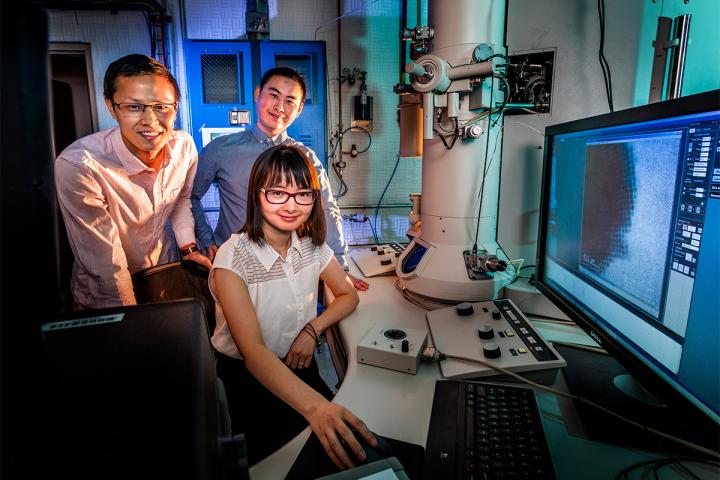Researchers from the University of Illinois at Urbana-Champaign and Northwestern University have made it possible to observe and simulate the self-assembly of crystalline materials at a much higher resolution than before.
Using computer modeling and an imaging technique called liquid-phase electron microscopy, the team pinpointed the individual motions of tiny nanoscale particles as they orient themselves into crystal lattices. The work confirms that synthetic nanoparticles – the fundamental building blocks of many synthetic and biological materials – can assemble in ways far more complex than larger particles, the researchers said, and paves the way to more general applications for mineralization, pharmaceuticals, optics and electronics.
The new study, led by Qian Chen, a professor of materials science and engineering at the U. of I., and Erik Luijten, a Northwestern professor of materials science and engineering and of engineering sciences and applied mathematics, is published in the journal Nature Materials.

“Imaging and modeling are routinely performed for particles about 1 micrometer in size,” said Luijten, who led the computation modeling portion of the study. “Here, we have newly developed techniques that can do this for particles that are 100 nanometers in size – 10 times smaller than before.”
Because nanoparticles are very small and interact in liquid solutions, verifying their crystallization pathways through direct observation was not possible before liquid-phase electron microscopy, said Chen, who led the experimental portion of the study.
[ad_336]
Chen’s team performed laboratory experiments using tiny gold prisms in a fluid, watching closely as the particles began to interact with each other.
“The particles begin to stack together and form columns, but they do so in a misaligned manner before finally packing tightly and crystallizing into ordered crystals,” said Zihao Ou, a U. of I. graduate student and study co-author.
“What we have observed is an intermediate amorphous phase that occurs along the crystallization pathway for nanoparticles – something not witnessed before this work,” Chen said.
However, there are details about crystallization pathways that cannot be measured by imaging alone, the researchers said.
“Our computer simulations, developed by Northwestern University graduate student Ziwei Wang, allow us to sort out the details of the fundamental driving forces behind nanoparticle motion and crystallization,” Luijten said. “It turns out that randomness in the orientation of the particles leads to a different type of crystallization on larger-length scales. That is a notion that was suggested by the experimental data, but it really required simulations to confirm this principle.”
[rand_post]
The researchers envision a wide range of applications for this development, from understanding how proteins self-assemble to the nanoscale physics behind new battery materials, for example.
“Scientists want to know how to control the synthesis of crystalline materials so that they can engineer new materials,” said Binbin Luo, a U. of I. graduate student and study co-author. “Understanding exactly how this process happens is essential to that control.”